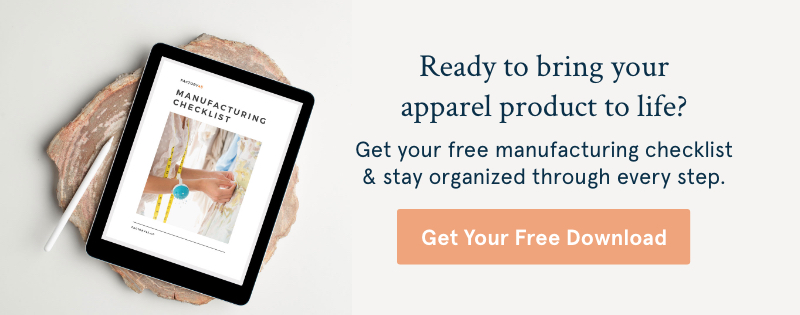5 Tips for Creating a “Made in the USA” Apparel Company
So, I’ve laid it out before — new designers tend to have a bad reputation. Not to say it’s your fault, it’s just that some have, unfortunately, ruined it for others.
Suppliers and manufacturers here in the U.S. have been in this game for a long time. And they’ve seen it all — from NAFTA to their neighboring factories shutting down to the early days of a shaky revival.
They’ve also seen every type of designer and aspiring entrepreneur, and most have come to the assumption that 9 times out of 10, it isn’t worth their time to take on work with someone who is new to the industry.
While navigating the world of sewn manufacturing may be new and probably a little intimidating, there are ways to set yourself up so that you don’t come off as the “new kid on the block.”
Let me break it down for you:
>> First and foremost: Set goals. So you have an idea – that’s great. Now, get it all out of your head and put it down on paper. While keeping in mind the vision of your product, you’ll want to set both long and short term goals. This will not only help to keep you motivated (long term), but also allow you see the little wins (short term) along the way.
>> Research. Creating your own apparel company takes a lot of time and money. You want to take all the time you need to ensure you have several reliable options for both fabric sourcing and cut and sew. Do all the research you can before narrowing down your list, this usually requires multiple prototypes, and check out any online reviews or references of past clients who have worked with the factories you’re hoping to partner with.
>> Budget. Not only are you going to need time and a lot of patience, but you will also need startup capital. You can likely negotiate with suppliers, but err on the side of caution and take the time to figure out what your budget is for each phase of development. If money isn’t growing on the trees outside of your house, I would strongly consider launching a Kickstarter campaign.
>> Organize your construction methods. Before you approach a supplier or factory, you want to make sure all of your ducks are in a row. Ideally, you will have a very detailed description of the fabric and materials you need (including weight, weave and fabrication) or a detailed spec sheet. This should include measurements, materials, colors, trim, hardware, grading, labels, tags, etc. and any other important information that would be needed to create your design. This will show that you know what you’re doing, have thought things through, and are a serious potential client.
>> Communication. You want this to be a two way street and effective communication is critical to your success. When you reach out to a project manager, there are some important “do’s and don’ts”:
DO: Provide a sample, pattern, spec sheet.
DON’T: Say things like “patent,” “sign an NDA,” or “What steps do I need to take?” These are all red flags to the production partner, indicating that you’re a newbie.
Above all, be polite, professional, responsive and appreciative. The world of domestic manufacturing is complicated but once you get your foot in the door, other doors will open.



